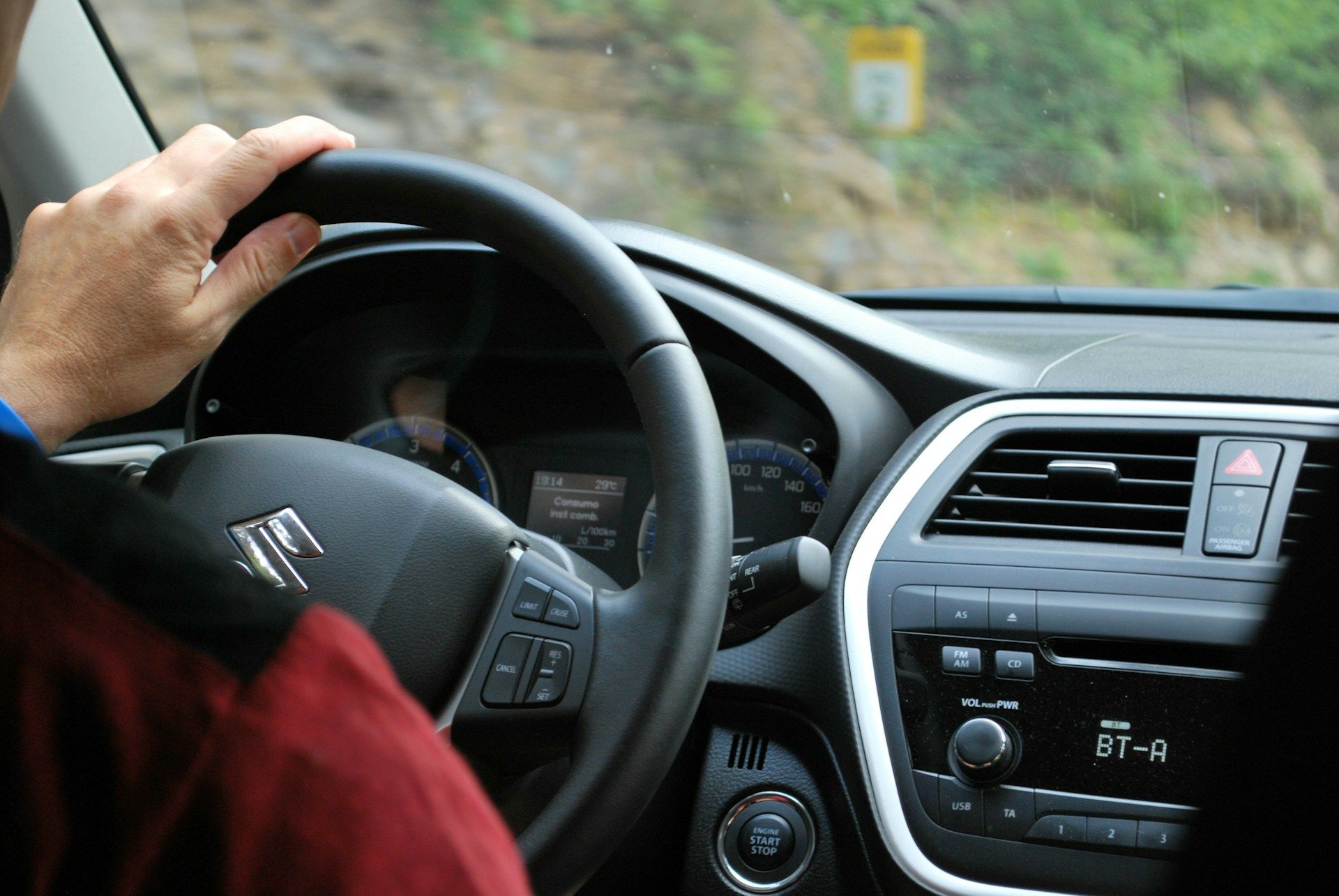Let's talk about your case
You can schedule a call with one of our lawyers anytime. Call today and get the help you need.
Or fill out our online form, and we will respond within 24 hrs.
When Should Airbags Deploy? A Guide for Ottawa Car Accident Victims
Airbag deployment in car accidents
Airbags are a crucial safety feature in modern vehicles, designed to protect occupants during car accidents. However, understanding when should airbags deploy and how they do so can be a complex topic, involving various factors and technologies. Being well-informed about airbag deployment not only helps in making informed decisions about vehicle safety but also plays a crucial role in dealing with insurance companies, personal injury claims, and accident liability.
Key Takeaways
- Understanding airbag deployment requires knowledge of the factors influencing it, such as speed and angle of impact.
- Different types of airbags provide protection in different collisions. Common issues include failure to deploy or inappropriate deployment due to manufacturing defects.
- An experienced lawyer can help victims secure compensation for their injuries caused by malfunctioning airbags, while proper seating position, seatbelt use and child safety guidelines can reduce the risk of injury in car accidents.
Understanding Airbag Deployment

Airbags are designed to rapidly inflate during a collision, providing a cushion between the vehicle occupants and the car’s hard structures, such as the dashboard, steering wheel, or windshield. The deployment of airbags depends on several factors, such as the speed and angle of impact, the type of collision, and whether the occupants are belted or unbelted. Grasping these factors can enhance car accident victims’ understanding of the airbag deployment process and its role in their situation.
To ensure optimal protection, airbags rely on a combination of sensors and other technologies that work together to detect a collision and activate the airbag deployment sequence. Subsequent subsections delve into the workings of airbags and the aspects that influence their deployment.
How Airbags Work
Airbag technology is complex, involving the use of chemicals such as sodium azide or guanidinium nitrate, which release nitrogen gas when ignited by a spark or electric signal. This rapid release of gas inflates the airbag, providing protection during a crash and cushioning the vehicle’s occupants.
Airbag sensors play a crucial role in this process, detecting the force of an impact and sending an electrical current to activate the airbag. These sensors are typically located at the front of the vehicle, behind the bumper. They function by detecting a front-end crash of sufficient severity, sending an electric signal to initiate the inflation process.
Understanding the operation of these sensors can provide valuable insights during consultations with a car accident lawyer.
Factors Affecting Deployment
The angle of impact can significantly influence airbag deployment during car accidents. Here are some key points to consider:
- Frontal collisions are more likely to trigger airbag deployment than other angles of impact.
- The speed of the car at the time of impact directly correlates to airbag deployment.
- For unbelted occupants, a front airbag will typically deploy when the crash is the equivalent of an impact into a rigid wall at 10-12 mph.
- Belted occupants will experience airbag deployment at approximately 16 mph.
Other factors that can affect airbag deployment include the occupant’s size and weight, the type of airbag system installed in the vehicle, and the type of crash. For example, side-impact airbags are designed to deploy in specific side-impact collisions, while curtain airbags are designed to deploy in specific rollover collisions. Comprehension of these factors can assist car accident victims in navigating their case complexities.
Types of Airbags and Their Functions

There are several types of airbags available in vehicles, each designed to protect occupants in different collision scenarios. These airbags include frontal airbags, side-impact airbags, and curtain airbags, each with distinct functions and deployment mechanisms.
Subsequent subsections will delve into the specific roles of these airbags and their contribution to passenger safety during collisions.
Frontal airbags are designed to protect occupants in head-on collisions, while side-impact airbags safeguard the torso and ribcage during side collisions. Curtain airbags, on the other hand, provide protection to the head in the event of a side impact crash or rollover accident.
Frontal Airbags
Frontal airbags are designed to inflate in moderate-to-severe frontal crashes, providing protection for the head, neck, and chest of the occupants. They are typically located in the steering wheel for the driver and in the dashboard for the front passenger. The deployment of a frontal airbag is triggered by a sensor detecting a front-end crash of sufficient severity, with seat sensors determining if an occupant is present and their weight.
The design and structure of a frontal airbag may vary depending on the vehicle manufacturer, but generally consist of:
- An airbag module, which includes an inflator, a fabric bag, and a sensor system
- Upon a crash, the sensor system detects the impact and triggers the inflator to rapidly fill the fabric bag with gas
- This provides a cushioning effect to protect the occupants’ head and chest.
Side-Impact Airbags
Side-impact airbags play a crucial role in protecting vehicle occupants during side collisions. They deploy from the side of the vehicle, forming a protective barrier between the occupant and the door or window to reduce the risk of injury to the upper body and head. These airbags inflate rapidly to provide cushioning and restraint during the collision.
Side-impact airbags are typically positioned in the outboard side of the seats for the driver, front passenger, and sometimes the rear passenger. They are designed to:
- Inflate in side crashes to protect the heads and chests of the occupants
- Sensors detecting a high-impact collision along the side of the vehicle activate the deployment of side-impact airbags
- Engineered to deploy in moderate to severe crashes
Curtain Airbags
Curtain airbags, also known as side-impact airbags, deploy from the roof of the vehicle during a side impact or rollover accident. They cover the windows and doors, providing protection for the head and reducing the risk of injury. The deployment process involves the use of sensors that detect an impact or sideways movement of the vehicle, which then triggers the airbags to deploy through the material, providing protection to the occupants.
Curtain airbags not only protect the head but also help to maintain the survival space for occupants and dissipate the force of the collision away from the vehicle’s interior. By understanding the function of curtain airbags and their role in side-impact and rollover accidents, car accident victims can be better prepared to navigate the complexities of their case.
Common Airbag Deployment Issues

Despite the life-saving potential of airbags, they are not without their issues. Common airbag deployment problems in motorcycle accidents include failure to deploy, inappropriate deployment, and defective airbags. In the following subsections, we will delve deeper into these issues and their potential impact on car accident victims.
Acknowledging various issues related to airbag deployment allows car accident victims to pinpoint potential problems and assess if their injuries stemmed from an airbag malfunction or defect. Such insight is pivotal when an accident claim or pursuing compensation for collision-related injuries.
Failure to Deploy
Sometimes, airbags fail to deploy during a collision, potentially leading to more severe injuries for vehicle occupants. Failure to deploy can be caused by a variety of factors, including the speed and intensity of the collision, sensor malfunction, and defective electrical components.
Preventing airbag deployment failure involves taking certain safety measures, such as:
- Replacing airbags after deployment
- Disabling the SRS correctly
- Adhering to the manufacturer’s maintenance recommendations
- Properly securing occupants
- Refraining from placing objects or body parts in the airbag deployment zone
By taking these precautions, car accident victims can minimize the risk of injuries wrongful death related to airbag deployment failure.
Inappropriate Deployment
In some cases, airbags may deploy inappropriately, causing unnecessary harm to vehicle occupants. This can be caused by:
- Overly sensitive sensors
- Mild or moderate crashes with sufficient seat belt protection
- Something impacting the vehicle’s top or rolling over an object
- Improper deployment due to manufacturing defects, improper maintenance, or sensor damage.
The potential repercussions of unnecessary airbag deployments include serious injuries or death, as well as expensive repairs. Understanding the potential causes of inappropriate deployment can help car accident victims take appropriate measures to minimize the risk of harm and ensure the safety of all occupants.
Defective Airbags
Defective airbags pose a significant risk to vehicle occupants, as they may not function properly or cause additional injuries when deployed. Some common causes of defective airbags include:
- Faulty manufacturing practices
- Unstable chemicals
- Manipulated test data
- Flawed quality control processes
- Specific issues with the inflators and impact sensors
It is important to address any potential issues with airbags to ensure the safety of vehicle occupants.
The prevalence of defective airbags is a serious concern in automobile collisions, as seen in the Takata airbag recall which has caused numerous fatalities and injuries. It is essential to address any potential airbag defects to guarantee the safety of passengers in a serious motor vehicle accident.
Legal Implications of Airbag Deployment
Airbag deployment has several legal implications, including potential liability for injuries sustained due to malfunctions or defects. In the following subsections, we will explore:
- Liability in airbag-related injuries
- Compensation for airbag injuries
- The importance of an experienced lawyer when navigating these complex legal issues.
Grasping the legal implications of airbag deployment enables car accident victims to ascertain their rights and possible courses of action while seeking injury compensation.
Liability in Airbag-Related Injuries
Determining who may be held liable for injuries sustained due to airbag malfunctions or defects can be a complex process. Liability can be attributed to:
- The manufacturer of the airbag
- The vehicle manufacturer
- The supplier of the airbag components
- The maintenance/repair personnel
Several court cases have found manufacturers liable for airbag-related injuries, such as the Takata Airbag Inflator Matter and cases against Mercedes and Volkswagen. Vehicle manufacturers may also be held accountable for airbag injuries if their actions resulted in the production of a defective product that caused the injuries.
Compensation for Airbag Injuries
Seeking compensation for injuries caused by airbag issues can be a daunting process, with victims often facing medical expenses, lost wages, and emotional distress. An experienced personal injury lawyer who, well-versed in personal injury law, can provide invaluable assistance to victims of airbag-related injuries by helping them secure the personal injury claim compensation they are entitled to, as well as guiding them through the process of personal injury claims.
The process of seeking compensation for airbag injuries may involve some legal fees:
- Collecting evidence to substantiate the liability of the at-fault party
- Aiding in the pursuit of damages caused by the malfunctioning airbag
- Enhancing the prospects of a just settlement
The expertise of law firm and a seasoned lawyer is fundamental in navigating these intricate cases and securing just compensation.
Importance of an Experienced Lawyer
Hiring an experienced lawyer to handle airbag-related injury cases is essential for navigating the complexities of the legal system and securing fair compensation. Experienced lawyers possess specific expertise when dealing with airbag-related injury cases, including knowledge of the laws and regulations related to airbag safety, and the ability to evaluate the severity of injuries caused by airbag malfunctions.
An experienced Ottawa car accident lawyers can provide the following services for car accident victims, including those in need of Ottawa car accidents best personal injury lawyers, without the personal injury lawyers charge that some may expect:
- Collecting evidence
- Negotiating with the insurance company
- Fighting for fair compensation
- Managing lawsuit filing intricacies
- Providing court representation, if needed
Their all-encompassing knowledge of the legal process and adeptness at these tasks positions personal injury lawyers, especially Ottawa personal injury lawyers, as an invaluable resource for car accident victims.
Preventing Airbag-Related Injuries

Preventing airbag-related injuries is a crucial aspect of ensuring the safety of vehicle occupants. By following guidelines for proper seating position, seatbelt use, and child safety, car accident victims can minimize the risk of injuries related to airbag deployment. In the following subsections, we will explore these safety measures in more detail.
Comprehending and executing these safety measures can aid in lowering injury risks, including common car accident brain injuries themselves, and promoting a safer driving experience for all occupants, especially since a car accident caused distress for many car accident victims.
Proper Seating Position
Maintaining a proper seating position is essential in minimizing the risk of injury during airbag deployment. It is recommended to sit with your chest at least 10 inches away from the center of the steering wheel to minimize injury during airbag deployment. Additionally, the backrest angle should be adjusted to ensure that the occupant is sitting in an upright position with their feet on the ground, which is the ideal posture for airbag protection.
It is not necessary for the driver’s feet to be flat on the floor while driving for optimal airbag safety, as long as the feet are able to reach the pedals easily, with the heels on the floor and the balls of the feet able to press the pedals. Maintaining a proper seating position can bolster safety during airbag deployment for car accident victims.
Seatbelt Use
Wearing seatbelts is essential in reducing airbag-related injuries as they help to keep the occupant in the correct position and prevent them from being propelled forward during a collision. As a result, the airbag is able to deploy properly and provide the necessary protection. Both seatbelts and airbags work in tandem to minimize the chances of serious injury in a car accident.
It is crucial to always wear seatbelts to ensure the effectiveness of both seatbelts and airbags in protecting passengers during a crash. Adhering to this safety measure can significantly curtail the risk of airbag deployment-related injuries for car accident victims.
Child Safety
Ensuring child safety in vehicles equipped with airbags is of utmost importance. Children should remain in the back seat of a car with airbags until they reach the age of 13, as this is the safest option until they reach this age. Rear-facing car seats are the recommended option for vehicles equipped with front and side airbags.
By following guidelines for car seat usage and placement in relation to airbags, parents and caregivers can ensure the safety of their children during car accidents. Strict adherence to these guidelines is vital in reducing the risk of airbag-related injuries in children.
Summary
In conclusion, understanding the mechanics of airbag deployment, the different types of airbags, and common airbag deployment issues is essential for car accident victims. By following safety guidelines, such as proper seating position, seatbelt use, and child safety measures, the risk of injuries related to airbag deployment can be minimized.
Furthermore, hiring an experienced lawyer to handle airbag-related personal injury cases, can help victims navigate the complexities of the legal system and secure fair compensation. Stay informed, stay safe, and always prioritize the well-being of all vehicle occupants.
Online Resources for Seatbelt Safety in Ontario
For more information and resources on seatbelt safety in Ontario, you can visit the following websites:
- Ontario Ministry of Transportation: This site provides comprehensive information on seatbelt laws and safety in Ontario, including how to properly wear a seatbelt and the benefits of doing so.
- Ontario Provincial Police: This page from the Ontario Provincial Police website offers detailed safety tips and guidelines on seatbelt use.
FREQUENTLY ASKED QUESTIONS
WHY DIDN'T MY AIRBAGS DEPLOY?
It appears that defects in the sensors or electrical components of the airbag system have prevented its deployment, most likely due to a design defect, poor calibration, or improper installation.
AT WHAT SPEED DO AIRBAGS DEPLOY CANADA?
Air bags in Canada typically deploy when a vehicle crashes into a solid wall at 13-23 km/h, equivalent to a moderate to severe frontal crash at 8-14 mph.
HOW LONG DOES IT TAKE FOR AIRBAGS TO BE DEPLOYED AFTER A COLLISION?
Airbags are designed to inflate within 30 to 50 milliseconds after a collision to protect occupants, typically during frontal collisions at speeds between 10-16 miles per hour or equivalent to 8-14 miles per hour into a solid wall.
DOES A CAR HAVE TO BE ON FOR AIRBAGS TO DEPLOY?
No, a car does not have to be on for the airbags to deploy as they are activated by sensors when a certain amount of impact is detected in a specific area.
WHAT IS AIRBAG FAILURE?
A warning light on the dashboard indicating an issue with the airbag system can signal a potential failure of one or more airbags in the event of an accident, posing a serious safety risk.
Let's talk about your case
You can schedule a call with one of our lawyers anytime. Call today and get the help you need.
Or fill out our online form, and we will respond within 24 hrs.
Thank you for contacting us.
We will get back to you as soon as possible. You can also book using this link: Personal Injury Booking Page
Please try again later
Related Blog Posts
Practice Areas
QUICK LINKS
CONTACT US
Tel: (613) 505- 5025
Fax: (613) 234-5852
info@wvgblaw.com
200-2571 Carling Avenue
Ottawa, Ontario
K2B 7H7
SERVICES
RECENT BLOG POSTS














